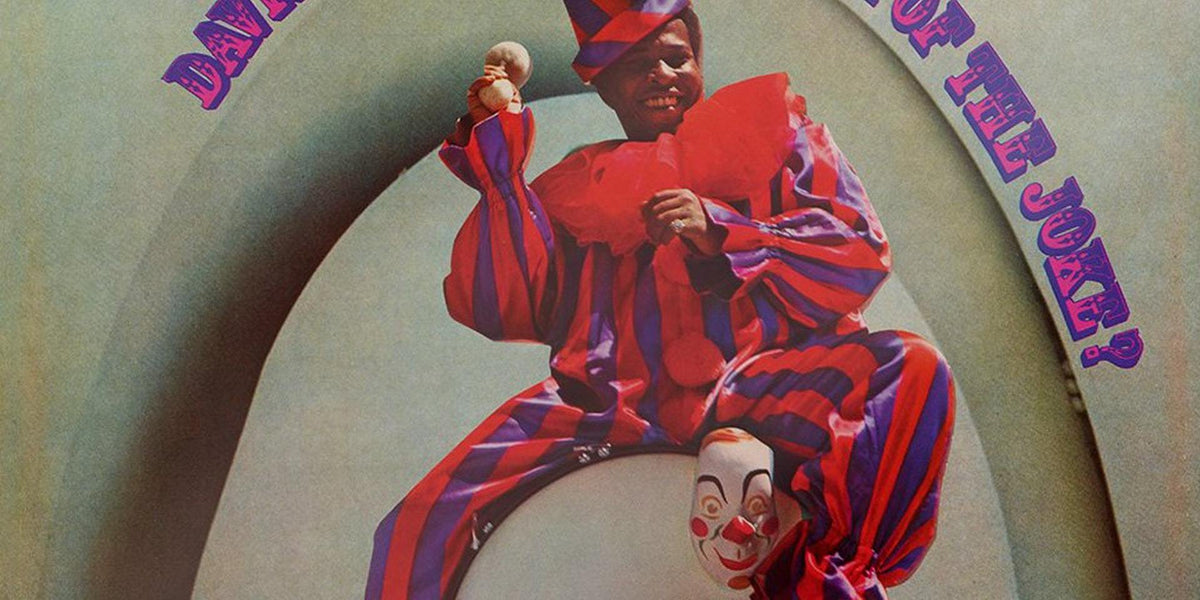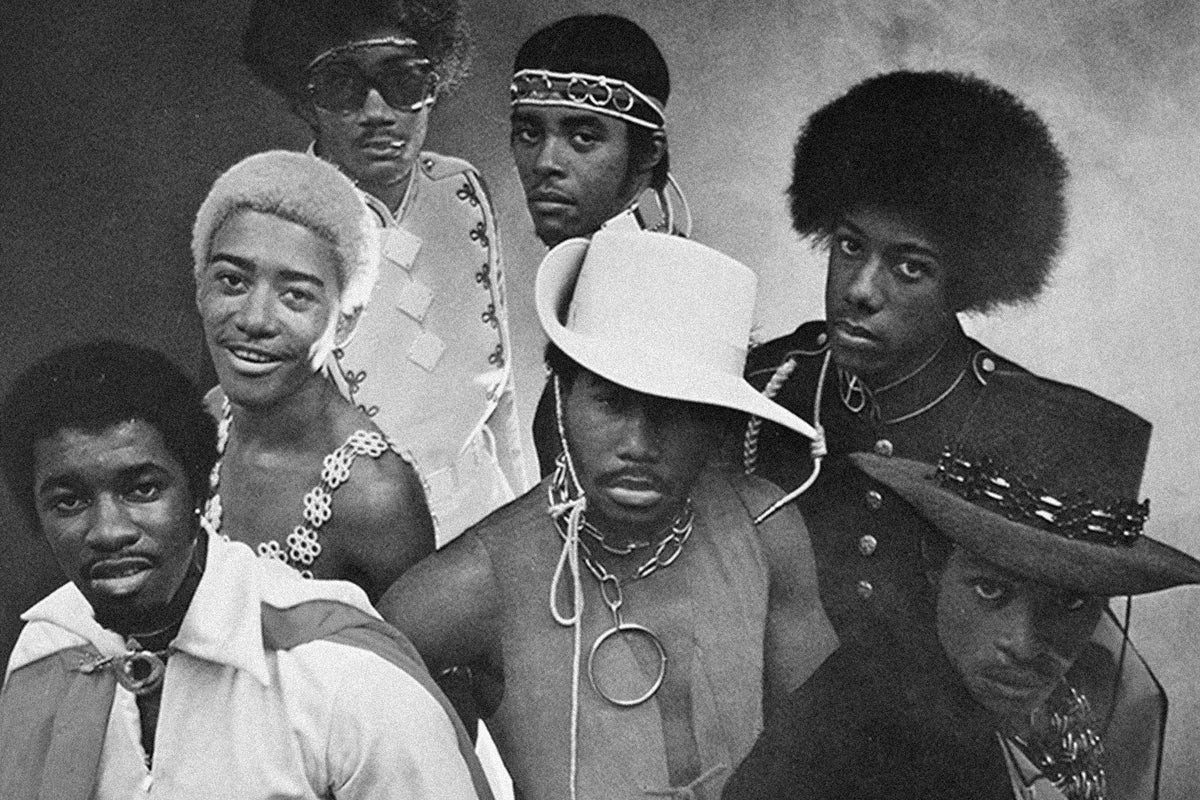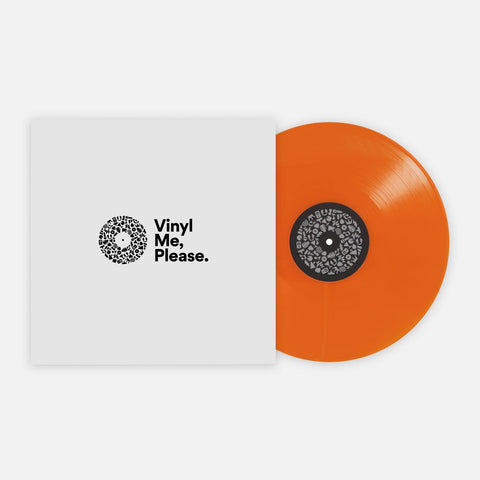With ‘Chapter 1,’ David Porter Expands His Legacy
We talk to the Stax songwriting legend about his first album in almost 50 years
When Stax Records closed up shop for good in the late ’70s, David Porter was the last captain steering the legendary soul music ship. After bankruptcy and a lack of national distribution forced the label to close in 1975, Porter was hired by Fantasy Records — which bought Stax from bankruptcy court — to run the label as an on-going concern. Porter was the perfect man for the job; with Isaac Hayes, he’d written songs, produced and A&R’d Sam & Dave records, and songs for basically all of Stax’s first wave. When Hayes became Stax’s biggest star of its second wave, Porter also had a woefully underrated run of solo records — Victim Of The Joke is one of the five best albums ever on Stax, in this writer’s opinion — but also became Stax’s de facto producer and in-house A&R, helming projects for everyone from the Emotions to the Bar-Kays. When Fantasy realized Porter intended to bring Stax back to its former glory, rather than plumb the Otis Redding catalog over and over, via releasing chart smashes from groups like the Bar-Kays, Fantasy more or less closed the book on Stax being a current label.
Porter, who grew up four doors down from Earth, Wind & Fire’s Maurice White, and had only made music under the Stax umbrella with people he’d literally grown up with, was sent adrift. He’d poured more than 15 years of all of his creative energy into Stax, and it had gone down in flames. But the Hall of Fame songwriter didn’t stop creating music in the late ’70s; his creative juices never stopped flowing. Though he hasn’t released any music under his name since 1973’s Sweat & Love — which he says was released unfinished and against his wishes — Porter never stopped songwriting, never stopped putting ideas to tape, never stopped collaborating with Memphis locals, and built up a catalog of over 200 songs and ideas that have been in his proverbial vault over the last 40-plus years. It might represent one of the greatest untapped wells of music history, a trove of R&B and funk jams that no one knew was sitting under our feet this entire time.
Which is where Chapter 1…Back In The Day comes in. Recorded in the last few years, Chapter 1 was made at Porter’s Made in Memphis studio complex, located on Union Avenue, just a half mile from where Elvis and Johnny Cash recorded for Sun Studios, and two miles from where Porter recorded his masterpieces with Stax. While recorded over these last couple years, the songs on the album were constructed using lyrics, demos and tapes Porter has made on a variety of formats over the last 40-plus years, in between breaks running successful businesses like a restaurant at Memphis’ airport and raising his sons.
Chapter 1 sounds like the logical extension of Porter’s solo work, in that although it was recorded using modern techniques, the 10 songs on it sound like they could have come out anytime between 1973 and 1988. “By Your Side” is a horn-filled funk slow-burn with a backbeat you could lay down on, and “365 Days to Never” is the best quiet storm single to never be released. “Move Your Body (Let’s Groove)” sounds like Sam & Dave if they sang over early ’70s Staple Singers instrumentals and “If I Have To Do Wrong” should go down in the annals of cheating (or near-cheating) ballads.
With an eye toward rebuilding the collaborative spirit that buoyed Stax, Porter recorded the album with a mix of his old Stax accomplices, and new artists he’s developing through Made in Memphis Entertainment. The band is filled out with ringers like Willie Hall — it’s his drums you hear in Isaac Hayes’ band, the Movement — Lester Snell and guitarist and co-writer Gary Goin. For vocals, Porter relies on the trio of up-and-comers Marcus Scott, Brandon Wattz and Candise Marshall, who lend these songs a modern tinge, but a vintage flavor.
Vinyl is an important part of Porter’s legacy, as his music — not only his solo material, but also stuff he produced for the Emotions and many other Stax artists — has found second, third and fourth lives as part of hip-hop samples. He’s one of the most sampled artists ever, and that’s thanks to DJs and producers finding his old deep cuts on wax and making something new. Which is why it makes perfect sense for Chapter 1 to come out on vinyl first, the best medium to take in its funkdafied sounds. Chapter 1 will be released to streaming services this fall, but if you want to hear the album before that, the only way to do so is by buying the vinyl, exclusively from the VMP Store, right now. It’s limited in stock, so grab this missing link of R&B history on the format it deserves to be heard on now.
We recently talked to Porter over Zoom about Chapter 1, why now is right for his first album in almost 50 years, being sampled in hundreds of songs and how the creative spirit he had in the early days of Stax has never left him.
This interview has been condensed and edited for clarity.
VMP: I guess my first question is, your last solo record came out in 1973. Why now? What motivated you to make this record and put it out this year?
David Porter: Well, interesting you have the dates on that. I really just wanted to passionately go into a catalog of material that I had written many, many years ago, but never released. And with that being the desire, I also — with Made in Memphis Entertainment, the record company that Tony Alexander and I started — wanted to be sure that we were doing something that was also creating potential opportunities for new aspiring talents to progress as well. And I felt that they very likely could do a better job on the material than I could in many instances. So it was a no-brainer for me.
I understand that a lot of this was recorded recently, but written over the years. When were you writing some of this stuff?
I had created a catalog of material in the late ’70s and the ’80s and in that period of time, and never released. Stax had closed. I did a couple of projects after Stax, and then went into a situation where I was just really focusing on raising my two sons and just enjoying a little of the life that I created through my work at Stax.
And then with the passion to create never leaving me, I still had some creative juices inside of me. So I just continued to write songs, found a young man that I was very, very comfortable with, and we decided to do a collaboration as well. And I brought him in and just started writing material and put it down, at that time, in the new tools that were available, say in the ’80s there, I put the material down. And so, I actually recorded with young female artist talents and male kids singing the material, but never with any intent of releasing it. And I explained that to them as well. And so, I just saved the material. Had no idea of what I would do with it, other than afford someone the opportunity to acquire material for their personal releases well into the future, not knowing who those artists potentially would be, but knowing that I would have something in the event that I was asked.
And then, recently, I just got the feeling that I should get back into some of this material. There were so many samples I’d done out of my catalog, until it was just a feeling that maybe there would be some fresh ideas that some of the new up-and-coming young producers and talents would also like to have an opportunity to find something in the new material, yet had never been released. So that was part of the overall motivation for it. It wasn’t that I was attempting to be an artist all over again. It’s almost like what Quincy [Jones] did many years ago when he recorded the product and presented James Ingram and some other talents performing them. And so I just felt like that was a good thing to do, and it also was a way to pass it on.
What was that conversation like when you were telling these singers and musicians, like, “I don’t want to release this, I’m just going to hold onto it”? That must have been really rewarding for you to just do that for you as opposed to being the Stax company man, pumping out product as fast as you can write it, right?
Well, it was. Because it was also during the time... I spent several years just recuperating, for lack of a better word, from what had happened to Stax Records. And so I just wasn’t in the mood to try to meet the regimen of releasing a great many records and that kind of thing. And then we had such an amazing combination of marketing and promotion and talents at Stax, until, unless I could have something comparable to that, it was really no serious motivation for me to try to release much of the material.
So I just wanted to be sure that I was not losing those ideas that I would come up with. And so I was putting them back in what many people nowadays call a catalog. I was putting back in, creating a catalog, and knew at at some point in time I’d make the decision as to what to do.
And so you just had the tapes of this, were they just in your closet, or where does this stuff live?
Even before Pro Tools, there was a lot of means to simply just do it. We just put the material down with just singing. Just get one of those little punch recorders that no longer exist and hit the button record, play record, and just put it down. And then with cassettes and that kind of thing. And then I would just simply catalog that material. I would write up the lyrics and catalog it. And so many of those things were lost, except I had copies of the tapes.
When was the decision made to make this record? I know you guys opened Made in Memphis a few years ago. At what point were you like, “Let’s pull this catalog back out and start looking at this?”
Thinking about where we are with Made in Memphis Entertainment and what could be an opportunity for some of these young talents that I run up on inside of a nonprofit program that I started, called The Consortium MMT program, for young aspiring songwriters and producers and artists, I just felt that there was so much talent. And I had this material, and why not look at some of the talent, young talent, and take some of the material and do it and see what would happen with it?
And I was fortunately able to get some of the players that worked with me at Stax Records, such as Willie Hall and Lester Snell and Michael Toles. And these were guys that recorded many of those original records at Stax Records. So I was able to get them inside of our current studios and rerecord the material that I’d written many years ago, and then use young talents with what we call artist development and develop them with the instincts and flavors that I knew was reminiscent to the period that I was most comfortable with.
I wanted to ask you about specifically “By Your Side,” [which] I think is my favorite record on the album. A lot of the songs on this really feel like they are extensions of specifically your solo work. I think “By Your Side” would fit on Sweat & Love. You could put that on either side of that album, and it would work. Do you view this as something that is in conversation with your past music, just separated by these years off?
Well, I feel that the creative instincts were really an extension of what I was doing from way back in the day. And I feel like that in order for me to be authentic to who I am, I have to be sure that I’m incorporating the authenticity of what made it connectable to people in years past. So, yeah, you’re right. I would definitely interpret not only the musicality of it, but the vocal extensions of what I was doing with someone. And even on some of the ad-libs and those melody things, that was something that I would just simply try to give those talented young talents an opportunity to interpret it in their way, but also make it reminiscent to the period that I was most comfortable with.
That was all a part of why I wanted to also make it where it could be an offering for young aspiring rappers and producers to sample from, but also make it also a reflection of what was really, really special about the gift that the creator give in me to create music.
You mentioning it being sample fodder, that has been a weird long tail of your music, as you are one of the most sampled artists of all time. Your Victim Of The Joke has been sampled hundreds of times. You don’t know how these producers necessarily find your music. What has that been like for you, to have your music having a second, third, fourth life [through] being sampled?
It is one of the most humbling experiences that I could have lived to experience, in the respect that creating the material, you have no idea what the transformation of the material is going to ultimately be, because you don’t know the future. And so just being sure that every aspect of the creative process was something that was done with pure passion and pure commitment to making it be as good in an emotionally connecting way as you possibly can was what the intent always was.
And then here comes a new means of creating extension to the music that’s fresh and innovative that I never imagined. And then to hear the interpretations that many of these young talents would take with the material was also humbling. For instance, there was a record — speaking of finding something that I was associated with and then working off of that — there was a record that I did many, many years ago, in 1972 or ’73, I believe, called “Blind Alley.” “Blind Alley” was on the project for the Emotions.
At the time at Stax, we were going through turmoil with the banks in Memphis, and there was a situation. I was not involved in that part of the business, but there was drama going on with distribution and marketing, those kinds of things. So, that record was never really purely promoted in a real serious way. And so here it was released, but never promoted. And there were several of those records that ended up being found by these young producers that were never really hits at that particular time. “Blind Alley” is a perfect example of that. It was an album cut.
So here comes “Blind Alley,” one of the foundational pieces on “Dreamlover” by Mariah Carey. Here comes “Blind Alley” on “Rump Shaker” by Wreckx-N-Effect. Here comes “Blind Alley” on Above the Rim. There’s about 100-plus samples of “Blind Alley.”
That was a song that I just originally wrote by myself. Isaac [Hayes] was busy, and I just went into the studio and just wrote the song and produced it as well. And it was found. And there were several pieces of material that were done that way. But what I found fascinating was how, interestingly, the people who would go into the catalog of mine would find ways to make it their own, but also not lose the significance of why they chose the material to sample, to begin with. So it was really, really a touching thing for me. And then to have it years, years later take on this life of its own is also exciting for me. About 500 samples plus is an exciting feeling.
I imagine you having sons who probably came of age during the age of hip-hop was probably a cool thing to be able to be like, “I made this.” They’re listening to stuff, and you’re like, “Oh yeah, that’s me.”
Yeah. Right, right, right. It’s always fascinating to me, to my sons... One is in San Diego, and one is in Atlanta, and I have one in Memphis here, to hear them talk about, “Dad, somebody was telling me that your name is associated with this song here and this record. You never told me that.” I said, “Well, it’s about 500 of them. I can’t really tell you all of them.” But yeah. It really is. It really is something that’s interesting for me. Yeah. And very stimulating.
Another thing that became clear to me, too, listening to this, these songs that you wrote years ago, is how much of modern R&B you really predicted. You listen to something like Usher’s Confessions, and all of the building blocks of that record are in your music and in [Chapter 1], but it’s coming out later, but it’s from earlier. So people might think, “Oh, this sounds like Usher,” when they hear this Chapter 1, but it’s really, “No, Usher sounds like David Porter.”
Well, and that is really, really the truth. I applaud all those talents that came after us, but when I listen to many of the records, I know where it’s coming from. It’s really coming from the roots of what we were doing. And it’s a great, great feeling to see their progress and hear of their progress. But it’s also gratifying to know that life is circular. And so that if we were first at catching that part of the circle, but it’s coming from a source. And so that also is very gratifying.
So, the album is called Chapter 1. What is your grand plan for this catalog, and how many releases do you see?
Well, the Chapter 1 really is set up to mean that there are more chapters to come. I have more than 200 songs that have never been released. And so, the goal is to give the audience the time, the chance to embrace Chapter 1, and hopefully they respect and appreciate that. And then in a progression, I bring these future pieces of material out. But I’m extremely excited with Chapter 1. And it’s very, very important that I get a true essence, feeling of what the public feels about it. But also, the goal would be to give them other offerings as well. And so I’m very excited about the possibilities of doing that.
I think my last question is, in a perfect world, what is the one thing you want somebody to take away from listening to Chapter 1? What is the takeaway you want somebody to have?
In the perfect world, I’d want people to know that this area, Memphis, Tennessee, has birthed some of the greatest minds created since ever. And out of the association that I’ve been so fortunate to have, Maurice White four doors up from me — we sang together in church at seven and eight years old. Isaac Hayes and I, before we joined forces, competing on Beale Street, singing on talent shows, going to rival high schools. Maurice and I graduated from the same high school. Andrew Love was right before me in high school. Al Jackson, Jr., the signature drummer of all of the Stax hit records, was a part of it.
I want them to feel that this effort and all these efforts coming is attributed to those guys, some of whom are no longer with us. But inside of every one of the efforts, inside of the creative process, this material will be the love that I received from every effort that these guys put in collaborating with me, in bringing material to the public, that I’ve been so fortunate to be associated with in my career. And so the love and passion inside of it is what I’d want someone to know, that every step of the way I was putting it into every one of the ideas, and I was trying to find others who would collaborate with the same spirit in this music. And that’s what you have. That’s why I call it soul.
Andrew Winistorfer is Senior Director of Music and Editorial at Vinyl Me, Please, and a writer and editor of their books, 100 Albums You Need in Your Collection and The Best Record Stores in the United States. He’s written Listening Notes for more than 30 VMP releases, co-produced multiple VMP Anthologies, and executive produced the VMP Anthologies The Story of Vanguard, The Story of Willie Nelson, Miles Davis: The Electric Years and The Story of Waylon Jennings. He lives in Saint Paul, Minnesota.
Related Articles
Join the Club!
Join Now, Starting at $36Pages











